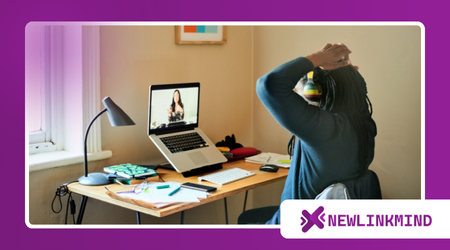Meditation for Remote Workers: Staying Grounded at Home

Meditation for Remote Workers is not a luxury in the contemporary professional landscape; it is a fundamental tool for resilience.
Anúncios
The shift to home offices has dissolved physical boundaries, creating a unique kind of pressure.
This new environment demands an intentional strategy to maintain focus, manage stress, and prevent the creeping burnout that often accompanies constant connectivity.
Mastering the art of presence at home is the new key professional skill.
How Does Remote Work Affect Mental Well-being and Focus?
The home environment presents a distinct set of cognitive and emotional challenges for the modern professional.
Anúncios
Without the structure of a central office, the lines between personal time and professional obligations become incredibly blurred.
This blurring often leads to a persistent, low-grade sense of ‘always-on’ urgency.
Remote workers frequently wrestle with social isolation, despite the ease of video conferencing.
Anúncios
They miss the spontaneous, informal connections of an office, which are crucial for psychological well-being.
The constant demands of family, pets, and household logistics add layers to the work day.
The very space meant for rest transforms into a place of performance and constant monitoring. This change can trigger heightened anxiety about performance and job security.
The sustained mental load, unlike the structured stress of the office, depletes cognitive reserves silently over time.
Read more: How Meditation Can Help You Enjoy Your Job Again
This new reality requires a proactive approach to mental health, moving beyond reactive stress management.
We must intentionally cultivate an internal compass to navigate the competing demands of work and life. Inner stability becomes the most valuable asset in an unpredictable, flexible environment.
Why Is Mindfulness the New Essential Skill for Remote Professionals?
Mindfulness training offers a direct antidote to the scattered attention and boundary erosion inherent in remote life.
It cultivates the ability to pay attention to the present moment without judgment.
This non-judgmental awareness helps remote professionals notice when work is encroaching on personal time.
Regular practice strengthens the brain’s prefrontal cortex, the area responsible for executive functions like focus and decision-making.
Check this out: Using Meditation to Overcome Fear of Public Speaking
Enhanced cognitive control means workers can allocate their attention deliberately. This is critical when facing the constant distractions of a non-traditional workspace.
The consistent application of mindfulness techniques reduces the physiological stress response. It lowers cortisol levels, helping the nervous system remain balanced even under pressure.
This internal stability is the bedrock for sustained productivity and creative thinking.
It is a skill that directly counteracts the hyper-connectivity and information overload of the digital age.
Professionals learn to consciously choose their response to a notification rather than reacting impulsively. Is that not the definition of true professional freedom in 2025?

What Are Simple and Effective Meditation for Remote Workers Techniques?
Integrating short, practical mindfulness moments into the workday is more sustainable than aiming for long sessions.
The goal is to create small, deliberate breaks that serve as mental resets throughout the day. These micro-practices can be seamlessly woven into existing habits.
A powerful method is the ‘Mindful Transition,’ done before starting or ending a task.
++ Yoga for Seniors with Knee Pain
Simply take three deep, slow breaths, focusing entirely on the sensation of air entering and leaving the body.
This short pause clears the mental slate and defines a clear boundary between activities.
The ‘Stoplight Technique’ offers an immediate tool to handle stress spikes. When a difficult email or challenging meeting arises, imagine a stoplight.
Red: Stop and take a full minute to breathe. Yellow: Observe your thoughts and feelings without judgment. Green: Proceed with an intentional, calmer response.
Another excellent practice is ‘Mindful Typing.’ Simply paying attention to the feeling of your fingers on the keyboard and the sound of the keys for one minute can anchor you in the present.
This brings focus into the very mechanism of the remote work day.
Meditation for Remote Workers applications often incorporate guided meditations tailored for common work scenarios.
These tools provide structure for beginners, ensuring consistency and accessibility. The key is finding a practice that feels natural and can be maintained.
How Can Mindfulness Strengthen Focus and Prevent Digital Fatigue?
Prolonged screen time and endless notifications lead to a unique type of exhaustion known as digital fatigue.
This is not just physical eye strain; it is cognitive burnout from sustained attention switching. Mindfulness directly addresses the root cause of this mental drain.
It improves the ability to sustain attention on a single task, reducing the need to constantly self-correct.
Research suggests that mindfulness training enhances attentional stability and reduces mind-wandering.
A 2024 study by the Journal of Occupational Health Psychology found that employees who regularly practiced mindfulness reported a 27% reduction in self-reported digital fatigue.
The mind of a remote worker is like a browser with fifty open tabs, constantly draining the system’s battery. Mindfulness is the software that closes forty-five of those tabs.
It restores processing power to the essential task at hand.
This table illustrates the common challenges and the corresponding mindful solution:
| Remote Work Challenge | Core Impact on Worker | Meditation Solution |
| Blurred Boundaries | ‘Always-On’ mentality, overwork | Mindful Transition (Start/End of Day) |
| Digital Distraction | Constant attention switching, low focus | Mindful Typing, Single-Task Focus |
| Social Isolation | Reduced sense of connection and purpose | Loving-Kindness Meditation (Short Practice) |
| High Stress Spikes | Emotional reactivity, anxiety | Stoplight Technique (Immediate Response) |
What Is the Long-Term Impact of Meditation for Remote Workers on Career Trajectory?
Adopting Meditation for Remote Workers is an investment in professional longevity, not merely a temporary stress fix.
It cultivates emotional regulation, which leads to clearer, more thoughtful decision-making. Employees who manage their emotions effectively are better problem-solvers.
For instance, a remote marketing manager who practices brief mindfulness before every team meeting manages conflict with greater composure.
Rather than reacting defensively to criticism, they pause, breathe, and respond with a constructive solution, increasing team trust. This is an example of emotional intelligence in action.
Imagine a remote software developer. By using Meditation for Remote Workers to return their focus after an interruption, they reduce the time spent in ‘context switching.’
This intentional focus minimizes coding errors and speeds up project completion, demonstrating measurable efficiency.
In a competitive market where flexibility is a given, internal discipline is the differentiator.
Companies in 2025 prioritize individuals who are self-aware and can operate independently under pressure. These are the skills that mindfulness fundamentally nurtures.

Why Is Finding Balance the Ultimate Goal of Staying Grounded?
The real objective is not to become perpetually calm, but to become intimately familiar with our internal state.
This enables us to adjust our sails based on the daily wind and tide. True grounding means feeling connected to our purpose, even when surrounded by the chaos of a home office.
Meditation for Remote Workers allows us to create an internal sanctuary that is portable and always accessible.
It gives professionals the capacity to be present for their work while also being fully present for their lives. This dual presence defines sustainable high performance.
This sustained practice transforms the work experience from a series of external obligations into an internal opportunity for growth.
It moves workers from simply reacting to the demands of their remote schedule to proactively shaping their day.
This profound shift is ultimately what separates the thriving remote professional from the burnt-out one.
Meditation for Remote Workers is the ultimate form of professional self-care for the modern age.
Frequently Asked Questions
What is the minimum time needed for effective remote work meditation?
Even three to five minutes of focused breathing or mindful awareness per day can provide tangible benefits, especially when integrated consistently into transitions between tasks.
Is it necessary to use a meditation app for remote workers?
No, while apps offer structured guidance for beginners and variety for experienced practitioners, the core practice only requires intentional attention to breath or bodily sensations, which can be done anywhere without tools.
How does workplace meditation differ from general stress reduction?
Workplace meditation is specifically aimed at enhancing cognitive function, improving focus, and strengthening professional boundaries, making it a performance tool in addition to a stress-reduction method.
Can employers mandate the use of mindfulness for remote workers?
While employers can offer resources, mandating the practice is counterproductive; the greatest benefits are realized when the practice is embraced voluntarily as a tool for personal and professional empowerment.
What is the best time of day for a remote worker to meditate?
The most impactful times are generally before starting the workday to set a focused intention, and during a mid-day break (like lunchtime) to clear the accumulated mental fog.
